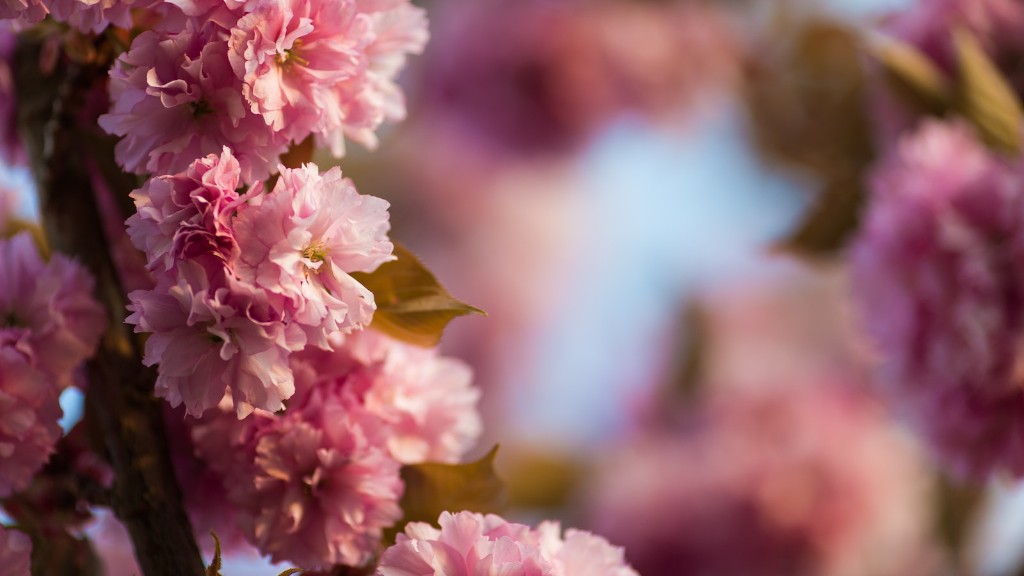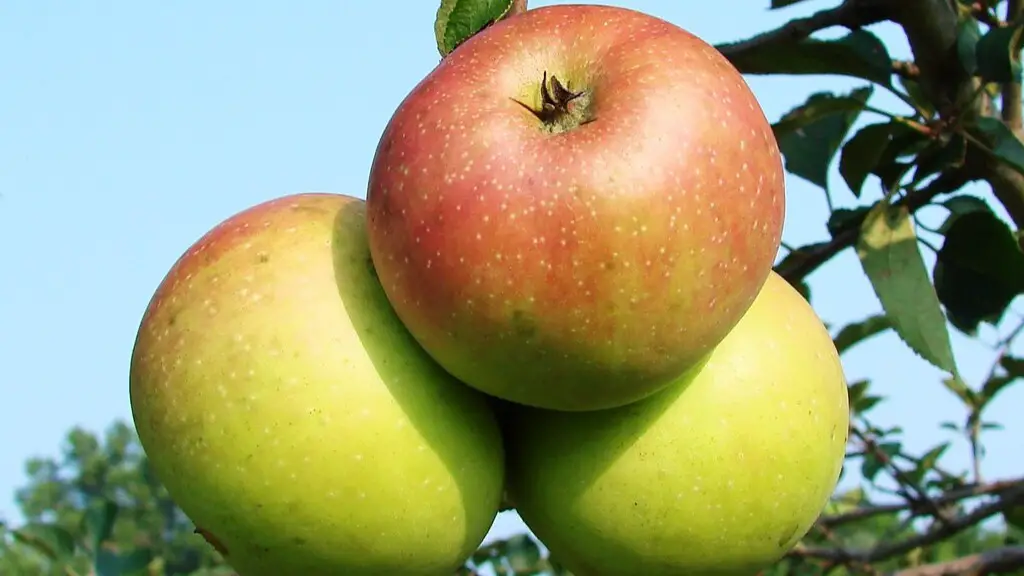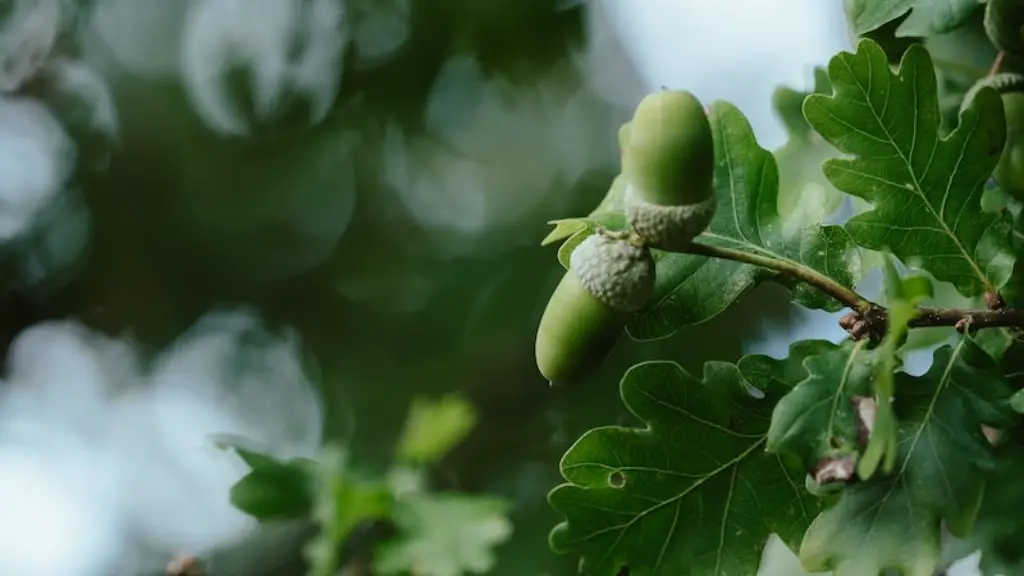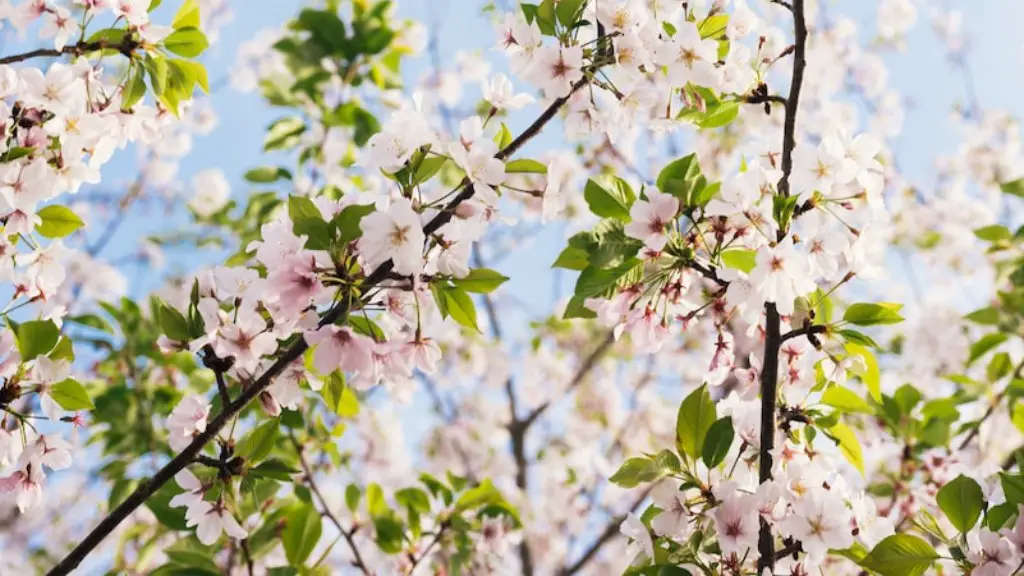When it comes to a flowering cherry tree, pruning is a critical part of the tree’s maintenance. Pruning controls the tree’s size and shape, which can help maintain a healthy and attractive canopy. Pruning also helps to prevent overbearing of branches, as well as disease and insect damage.
But when is the best time to prune a flowering cherry tree? This can be a difficult question to answer since different varieties of cherry trees flower at different times. Generally speaking, however, most cherry trees should be pruned when they are dormant in the late winter months.
According to horticultural experts, the ideal time to prune a flowering cherry tree is in late winter, while the tree is dormant. A dormant tree is one that has no visible signs of growth and will not be actively growing until spring. Pruning during this period will ensure that the tree’s natural formation will not be damaged, as well as help prevent potential infestations or diseases. It is important to note, however, that not all cherry trees will be dormant at the same time. Depending on the type of cherry tree, the best time to prune can vary.
When pruning a flowering cherry tree, it is important to take care not to overly prune the tree. While it is necessary to remove dead, diseased, or unwanted branches, it is important to leave some “green” stems and leaves in order to promote regrowth. If too much of the foliage is pruned, the tree will not be able to recover its energy reserves and yield more flowers.
In addition to pruning, proper fertilization is another essential aspect of promoting healthy growth in a flowering cherry tree. To determine how much fertilizer is needed, it is important to consider the tree’s size, environment, and species. Typically, cherry trees need a fertilizer that is high in nitrogen, but low in phosphorus and potassium. It is best to avoid over-fertilizing the tree, as it can cause serious damage.
Finally, watering is also important for cherry trees. It is important to note that all cherry trees require different amounts of water, depending on their size and location. To ensure the tree receives enough water, it is best to water deeply and infrequently. Too much water can damage the tree’s roots, while not enough water can cause the leaves to turn yellow and stunt growth.
Maintaining branches in a flowering cherry tree
When it comes to maintaining a flowering cherry tree, it is important to note that there are certain branches that should be pruned in order to maintain a healthy canopy. Removing crossing branches is beneficial to the tree as it helps maintain shape and form, and enables the tree to produce more flowers. Additionally, removing any dead or damaged branches helps to prevent the spread of disease, as well as provides better access for sunlight.
Another important part of maintaining branches in a flowering cherry tree is thinning and shaping. Thinning is important for controlling the size of the tree and helps maintain an attractive shape. Thinning also helps to promote air circulation by removing overcrowded branches, which can help to reduce the risk of disease. Shaping helps keep the tree symmetrical, as well as helps to ensure the tree will not become top-heavy. Lastly, selective pruning helps to promote the healthy growth of the tree by removing weak or non-productive branches.
To achieve the ideal size and shape of a flowering cherry tree, it is important to be aware of the different techniques that should be used when pruning. To properly trim the tree and achieve a symmetrical formation, it is best to use hand pruners as opposed to loppers. Hand pruners provide a more precise cut, whereas loppers can create more jagged edges. For larger branches, using a pruning saw may be necessary. It is important to note, however, that all pruning should be done with caution and care.
Caring for a flowering cherry tree
In addition to pruning, there are several other steps that can be taken to ensure a healthy flowering cherry tree. Proper location is key; to ensure the tree receives enough direct sunlight and ample air circulation, it is recommended to place it in an open, sunny area with plenty of space. Additionally, it is important to note that cherry trees thrive best in soil that is well-draining and rich in organic matter. Adding a layer of mulch around the tree can help retain moisture and prevent weeds from competing with the tree’s roots for nutrients.
Pests and diseases can also be an issue when it comes to flowering cherry trees. Aphids, lace bugs, and caterpillars are some of the most common pests that can attack cherry trees, while fungal infections can occur if the tree is overwatered. To help prevent such issues, it is important to inspect the tree regularly and watch for any signs of distress. Additionally, spraying the tree with an insecticidal soap can help ward off any pest infestations.
Lastly, it is important to remember to prune and shape the tree regularly. It is best to prune the tree when it is dormant, as this will help encourage healthy growth and flowering. Additionally, it is important to shape the tree in order to ensure it does not become top-heavy. By monitoring the tree’s growth and following a regular pruning schedule, it is easier to control the size and shape of the tree, as well as promote healthy growth.
Fertilizing a flowering cherry tree
Fertilizing a flowering cherry tree is an essential part of maintaining a healthy tree. Typically, a fertilizer high in nitrogen is best for cherry trees, as this will help the tree’s foliage remain thick and lush. It is important to note, however, that fertilization will vary depending on the tree’s size and its location. To ensure the best results, it is best to consult with a horticulturalist or a professional landscaper.
When fertilizing a flowering cherry tree, it is important to be aware of the different types of fertilizers available. Chemical fertilizers are often used for quick results, but can be damaging if overapplied. Organic fertilizers, on the other hand, such as compost or manure, are slower to act but are generally safer for the environment. Additionally, there are several slow-release fertilizers available that will slowly release their nutrients into the soil over time, making them less likely to burn the roots.
No matter which fertilizer is chosen, it is important to apply it correctly. Before fertilizing, it is recommended to check the soil to determine its nutrient levels. Once the nutrients have been identified, the appropriate type and amount of fertilizer can be applied. Additionally, it is important to remember to water the tree after fertilizing in order to help the fertilizer penetrate the soil.
Identifying diseases and pests in a flowering cherry tree
When caring for a flowering cherry tree, it is important to be aware of common diseases and pests. An infestation of pests or fungal infections can cause the tree to become weak and unhealthy. Additionally, pest infestations can attract a variety of other pests, creating a vicious cycle of damage to the tree. To detect these issues in the early stages, it is recommended to inspect the tree weekly for any signs of distress.
Aphids, caterpillars, and lace bugs are some of the most common pests that can infest a flowering cherry tree. Early signs of an infestation include wilting and discoloration of the foliage, as well as the presence of small webs or insects. To help ward off pest infestations, it is recommended to spray the tree with an insecticidal soap. Additionally, introducing beneficial insects into the area, such as ladybugs and green lacewings, can help naturally eliminate pests.
Fungal infections can also be an issue for a flowering cherry tree. Symptoms of a fungal infection include the appearance of dark spots on the leaves and wilting of the foliage. Fungal infections are typically caused by overwatering, so it is important to monitor the tree’s water intake to ensure it is not receiving too much. If a fungal infection is present, it is recommended to apply a fungicide to help combat it.
Lastly, it is important to be aware of any structural defects in the tree. These defects can include overbearing of branches, which can prevent the tree from receiving adequate amounts of sunlight and air circulation. Moreover, structural defects can lead to the tree becoming top-heavy, which can cause the tree to become more prone to disease and insect damage.
Preventing damage in a flowering cherry tree
When caring for a flowering cherry tree, there are several steps that can be taken to help prevent damage and promote healthy growth. One of the most effective ways to help protect the tree is by keeping the area around it clear of debris. It is also important to note that pruning should be done with care, as over-pruning can damage the natural formation of the tree. Additionally, it is important to be aware of water levels in order to avoid overwatering or underwatering the tree.
To help keep the flowering cherry tree healthy and protected from damage from external sources, it is important to be aware of its environment. If the tree is located in an area that is prone to strong winds, for example, it is important to take steps to protect the tree from the wind. Additionally, if the tree is located near a busy road, it is important to be aware of nearby air pollution, as this can cause harm to the tree.
Finally, it is important to remain vigilant and monitor the tree for any signs of distress. Early detection of any potential problems is key to minimizing damage to the tree. Regularly inspecting the tree can also help detect any pests or diseases in the early stages and help prevent them from spreading.
Watering and fertilizing a flowering cherry tree
When caring for a flowering cherry tree, it is important to be aware of the tree’s water intake and fertilizer needs. All cherry trees require different amounts of water depending on their size and location. To ensure the tree receives enough water, it is best to water deeply and infrequently. Too much water can damage the tree’s roots, while not enough water can cause the leaves to turn yellow and stunt growth.
Fertilizing is also an essential part of maintaining a healthy flowering cherry tree. Typically, a fertilizer high in nitrogen is best for cherry trees, as this will help the tree’s foliage remain thick and lush. It is important to note, however, that fertilization will vary depending on the tree’s size and its location. To ensure the best results, it is best to consult with a horticulturalist or a professional landscaper.
When it comes to applying fertilizer to a flowering cherry tree, it is important to be aware of the different types of fertilizers available. Chemical fertilizers are often used for quick results, but can be damaging if overapplied. Organic fertilizers, on the other hand, such as compost or manure, are slower to act but are generally safer for the environment. Additionally, there are several slow-release fertilizers available that will slowly release their nutrients into the soil over time, making them less likely to burn the roots.
Protecting a flowering cherry tree from extreme weather conditions
When caring for a flowering cherry tree, it is important to note that extreme weather conditions can cause damage to the tree. Common weather-related occurrences such as frost and wind can cause damage if they occur while the tree is still in its vegetative state. To protect the tree from extreme weather conditions, it is important to select the proper planting site and take steps to minimize the risk of damage.
When selecting a site for a flowering cherry tree, it is important to consider the conditions in which the tree will thrive. It is best to choose an area that is open, sunny, and well-draining. Additionally, it is best to avoid planting in areas that are prone to strong winds, as this can cause the tree





